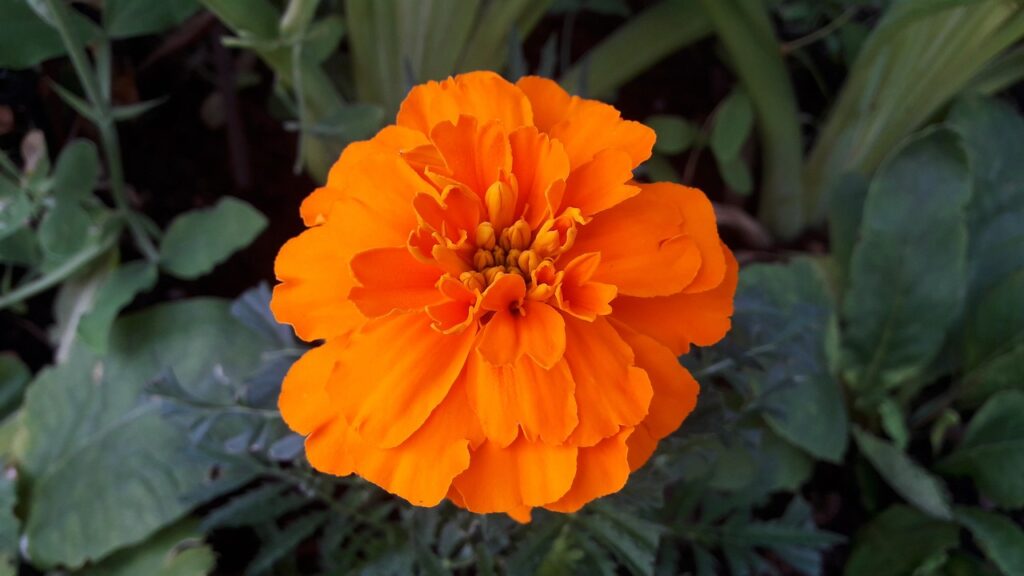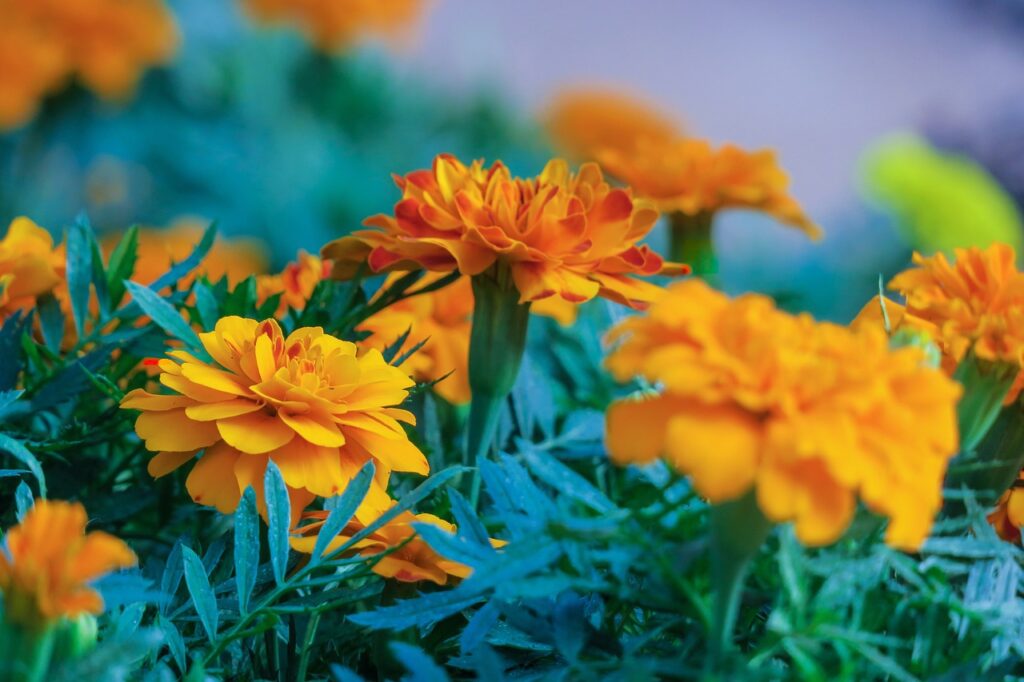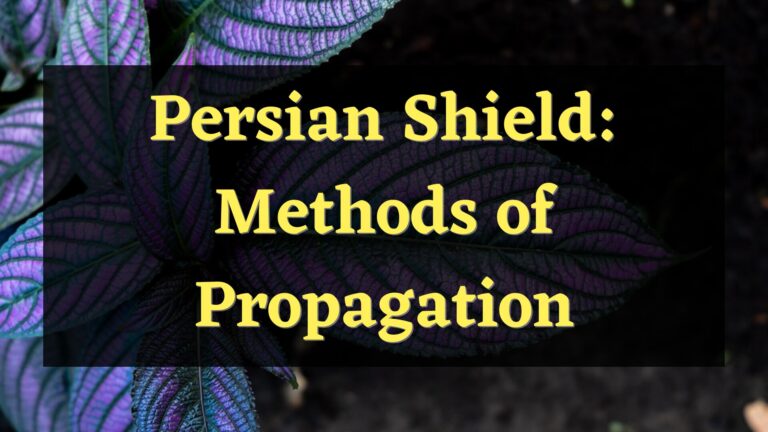Marigold leaves turning purple happens for various reasons. Nutrient deficiency and several environmental factors affect the color of marigold leaves. A purple leaf is a sign that your marigold plant is not getting enough nutrients. In this article, the reasons why this coloring of leaves happens and the remedies for how to fix it will be discussed.
Why are Marigold leaves turning purple?
There are several reasons why marigold leaves turn purple. The factors that affect the colors of marigold leaves are environmental conditions, nutrient deficiency, and the way you take care of them.
Phosphorus Deficiency
Phosphorus deficiency is one of the most common reasons why marigold leaves turn purple. Purpling starts on the underside or at the tips of the leaf until it spreads on the entire leaf. Older leaves are more susceptible to getting a purple color.

Magnesium Deficiency
Marigold will not be able to maintain or produce new chlorophyll when it lacks magnesium. Leaves will turn purple when they didn’t get enough magnesium.
Potassium Deficiency
A lack of potassium will stop the chlorophyll from working. When it happens, the leaves will become weak and will turn purple.
Low temperatures
Low temperatures especially at night can affect the marigold plant in different ways. Purpling of the leaves occurs when the temperature falls below 13 degrees Celsius.
Powdery Mildew
Powdery Mildew is a fungus that results in the development of white mold on the leaf surfaces of marigold plants. Leaves will turn purple when molds develop in the stem of plants. Spores can be transferred from one plant to another through the air. Fungal growth can be a result of overfertilizing with nitrogen and overwatering.
White Mold Infections
Fungus Sclerotinia causes the development of white molds. When the stems get infected by white molds, the leaves will be affected and their color will change into purple.
Cold soil
Marigold plants will not be able to process nutrients properly when the soil is cold. Purpling of leaves will happen when the plant lacks nutrients.

Excess Sunlight
Marigolds must not be put under direct sunlight because they can damage their leaves. Marigold leaves may turn red or purple when it is damaged by too much heat.
How to fix marigold leaves turning purple?
Restoring the health and fixing the purple marigold leaves is easy. Here are some of the ways that you can do to bring back the health of your marigold leaves.
Soil Analysis
Soil analysis will help you to know if the plant lacks phosphorous. There is a phosphorous deficiency when the phosphorous level gets below 30 ppm. To increase the level of phosphorous that your plants get, you can add compost, rock phosphate, superphosphate, manure, and bone meal.
Check the soil pH
Checking the level of soil pH will help you to know if the soil is acidic. Highly acidic soil affects the level of phosphorous that the plant gets. The ideal level of soil pH for marigolds is six to seven.
Maintaining a warm environment
Maintaining a warm environment will help the marigold plant to easily absorb phosphorous. Marigolds will not grow effectively in moist or cold soil. Purpling of leaves commonly happen in early spring. The plant must be put in areas where it will get enough sunlight. The plant will easily recover and its leaves will bring back to their natural color when the climate warms up.
Maintain a good distance
Maintaining a good distance will promote better airflow. It will also prevent the transfer of diseases and molds between plants. If there is a little distance between your plants, you can repot or prune them.
Check the conditions of the plants regularly
Checking your plants regularly will prevent diseases from spreading from one plant to another. Regular inspection will help you to keep your marigold plant healthy.
Remove plants that are infected by Sclerotinia
Sclerotinia is not a treatable plant disease. It can live in the plant for five years so it is better to remove the plants that are infected with it to prevent it from infecting other plants.
Use fertilizer
A fertilizer can affect the health of the marigold plant so it must be applied moderately. A fertilizer that is rich in phosphorous must be used when your marigold plant is experiencing a phosphorous deficiency. A fertilizer that has a high content of potassium must be used if the cause of purpling of leaves is potassium deficiency. Alternatively, you can apply an organic fertilizer or one created especially for marigold plants.
Use natural organic compost
Compost holds more water in the root zone of the plant. When you add too much compost, the roots will be damaged. Make sure you add a balanced amount of compost to the soil to prevent the roots from rotting. Compost helps in increasing the level of magnesium. Adding compost is also good when your plant is experiencing magnesium deficiency as it can increase the level of magnesium on the surface of the plant.
Use Epsom salt
Epsom salt balances the chlorophyll through magnesium. Mix a tablespoon spoon of Epsom salt and half a gallon of water and apply it to the roots of the plant for two weeks. It will fight magnesium deficiency so the leaves of marigold will be healthy.
Provide enough sunlight
Marigold plant grows better in a warm environment. Find an ideal spot that where your marigold plant will get six to eight hours of sunlight. When the temperature is too high, it must be placed in a shaded spot to protect it from too much and prevent the leaves from getting damaged.
Check the iron levels.
Checking the iron level is necessary to ensure that the plant will easily absorb phosphorous. It will prevent the plant from experiencing a phosphorous deficiency.
Conclusion

Marigold leaves turning purple is a concern that must be addressed immediately to keep your plant healthy. Proper care and attention are necessary to prevent nutrient deficiency, stop the spread of molds, and maintain an ideal environmental condition. Preventing the leaves from turning purple will make the marigold plant more attractive in your garden.

Elizabeth Mcmillan is a passionate gardener with a strong interest in plants. She used to be a teacher, but Elizabeth has spent the last few years immersing herself in the world of plants, learning about their biology and cultural value and trying out different ways of growing them in her own garden. Elizabeth Mcmillan loves indoor plants, succulents, and cacti, and her friends and family know her as a plant care expert.







